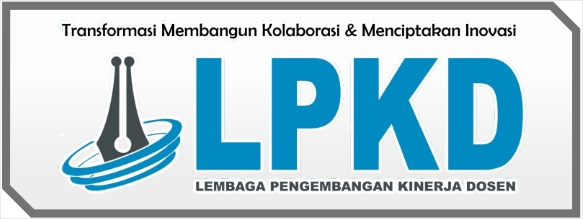Perbedaan Informasi Citra Diagnostik T2WI Spir dan T2WI Dixon MRI Lumbal Potongan Sagital Dengan Kasus Hernia Nucleus Pulposus (HNP)
DOI:
https://doi.org/10.59581/diagnosa-widyakarya.v1i4.1459Keywords:
lumbar MRI, herniated nucleus pulposus (HNP), SPIR, DixonAbstract
Herniated nucleus pulposus (HNP) is the leading cause of back pain in old age, occurring as a result of tearing of the fibrous annulus and the nucleus pulposus exiting through the tear. To optimize pathology, fat suppression techniques are needed to suppress fat and fluid. Fat Suppression techniques include Dixon and SPAIR. The use of Dixon is relatively longer but can produce four images at once, while SPIR has the advantage of being more resistant to inhomogeneous magnetic fields. The purpose of this study was to determine the difference between T2WI SPIR and T2WI diagnostic image information Dixon Sagital Cut Lumbar MRI with Hernia Nucleus Pulposus (HNP) cases as well as find out which one is better between the two techniques. The type of research used is quantitative research with an experimental approach that uses prospective data aimed at determining the difference in diagnostic image information T2WI SPIR and T2WI Dixon MRI examination of Sagital Cuts. The study population is patients who perform Lumbar MRI examinations with HNP cases at the Radiology Installation of NTB Provincial Hospital for the period May-July 2023. This study applied total sampling, using a research sample of 17 patients. The results showed a difference in image information between the T2WI SPIR and T2WI Dixon sequences on Lumbar MRI examination of Sagital Cut with a p-velue value smaller than α (<0.05), namely in the anatomy of the Spinal Cord with a p-value (0.021), and the anatomy of the Corpus Vertebraewith value p-value (0.001). The T2 Spir sequence is more optimal in showing anatomical information on the Sagittal Cut lumbar MRI examination compared to the T2 Dixon sequence. due to the more homogeneous emphasis of fat on the anatomy of the Spinal Cord and Corpus Vertebrae
References
Adityawarma, A. A. N. A. H., & Wahyudana, I. N. G. (2021). Herniasi nukleus pulposus lumbal multipel disertai kanal stenosis dengan drop foot syndrome dan atrofi otot unilateral: sebuah laporan kasus. Intisari Sains Medis, 12(3), 728. https://doi.org/10.15562/ism.v12i3.993
Amin, R. M., Andrade, N. S., & Neuman, B. J. (2017). Lumbar Disc Herniation. Current Reviews in Musculoskeletal Medicine, 10(4), 507–516. https://doi.org/10.1007/s12178-017-9441-4
Bray, T. J. P., Singh, S., Latifoltojar, A., Rajesparan, K., Rahman, F., Narayanan, P., Naaseri, S., Lopes, A., Bainbridge, A., Punwani, S., & Hall-Craggs, M. A. (2017). Diagnostic utility of whole body Dixon MRI in multiple myeloma: A multi-reader study. PLoS ONE, 12(7), 1–14. https://doi.org/10.1371/journal.pone.0180562
Dewi, I. K., Rasyid, & Dartini. (2019). Perbedaan Informasi Citra Anatomi Mri Knee Joint Pada Sekuens Spir Dan Spair Pembobotan Proton Desity. Repository Poltekkes Kemenkes Semarang. Semarang.
Fisnandya Meita Astari, Rasyid, & Fatimah. (2018). Perbedaan Informasi Citra Diagnostik Antara Sekuen T2 Tse Stir Dan T2 Tse Dixon Pada Pemeriksaan Mri Lumbal Potongan Sagital Dengan Kasus Radiculopathy. JRI (Jurnal Radiografer Indonesia), 1(1), 52–60. https://doi.org/10.55451/jri.v1i1.12
Ikhsanawati, A., Tiksnadi, B., Soenggono, A., & Hidajat, N. N. (2015). Herniated Nucleus Pulposus in Dr. Hasan Sadikin General Hospital Bandung Indonesia. Althea Medical Journal, 2(2), 179–185. https://doi.org/10.15850/amj.v2n2.568
Kurniawan;, A. N. Y. S. A. D. P. S. M. A. N. (2022). Analisis Perbedaan Informasi Citra Anatomi Antara T2 STIR dan T2 MEDIC Potongan Sagital MRI Lumbal pada Kasus Hernia Nucleus Pulposus (HNP). 1–9. //repository.poltekkes-smg.ac.id/index.php?p=show_detail&id=32783&keywords=sudiyono
Lee, S., Choi, D. S., Shin, H. S., Baek, H. J., Choi, H. C., & Park, S. E. (2018). FSE T2-weighted two-point dixon technique for fat suppression in the lumbar spine: Comparison with SPAIR technique. Diagnostic and Interventional Radiology, 24(3), 175–180. https://doi.org/10.5152/dir.2018.17320
Milewski, M. D., Smitaman, E., Moukaddam, H., Katz, L. D., Essig, D. A., Medvecky, M. J., & Haims, A. H. (2012). Comparison of 3D vs. 2D fast spin echo imaging for evaluation of articular cartilage in the knee on a 3 T system scientific research. European Journal of Radiology, 81(7), 1637–1643. https://doi.org/10.1016/j.ejrad.2011.04.072
PUSPITASARI, T. I. (2023). PERBANDINGAN INFORMASI CITRA ANATOMI MRI GENU SEKUEN PD WEIGHTED-TSE DIXON DAN PD WEIGHTED-TSE SPAIR PADA KLINIS TRAUMA. PERBANDINGAN INFORMASI CITRA ANATOMI MRI GENU SEKUEN PD WEIGHTED-TSE DIXON DAN PD WEIGHTED-TSE SPAIR PADA KLINIS TRAUMA. https://repository.poltekkes-smg.ac.id/index.php?p=show_detail&id=39815&keywords=dixon
Radue, E. W., Weigel, M., Wiest, R., & Urbach, H. (2016). Introduction to Magnetic Resonance Imaging for Neurologists. CONTINUUM Lifelong Learning in Neurology, 22(5), 1379–1398. https://doi.org/10.1212/CON.0000000000000391
Zanchi, F., Richard, R., Hussami, M., Monier, A., Knebel, J. F., & Omoumi, P. (2020). MRI of non-specific low back pain and/or lumbar radiculopathy: do we need T1 when using a sagittal T2-weighted Dixon sequence? European Radiology, 30(5), 2583–2593. https://doi.org/10.1007/s00330-019-06626-6.













